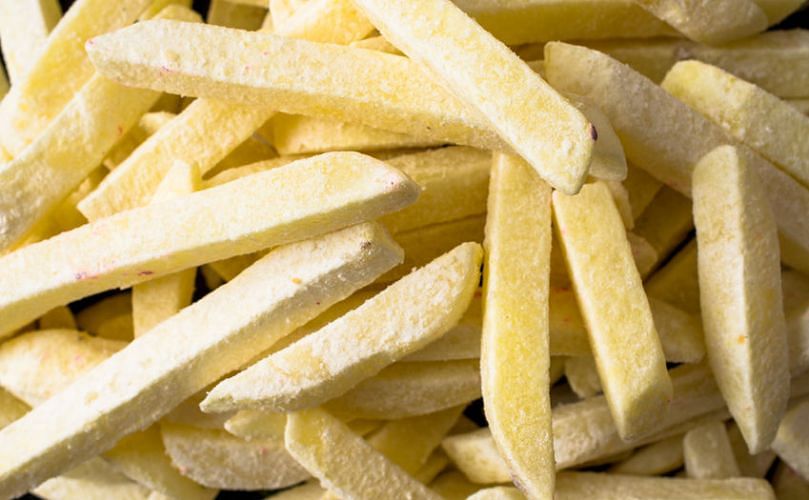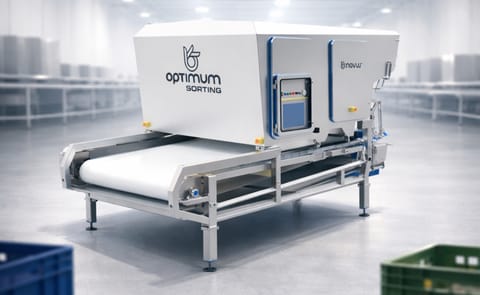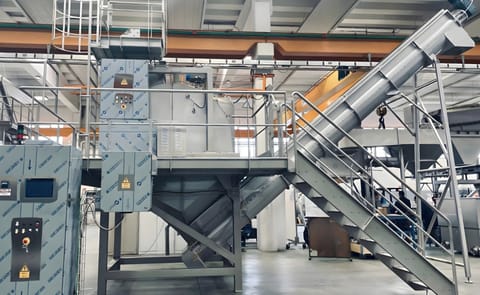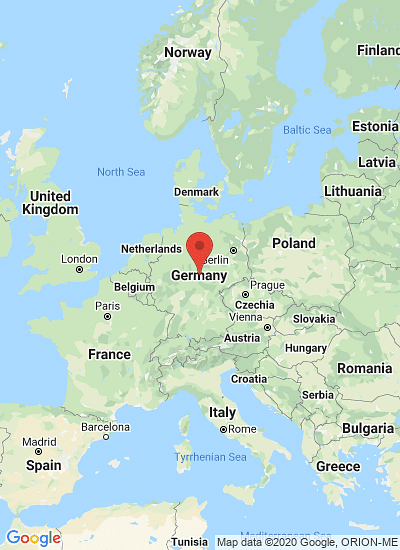GEA’s tunnel vision offers sustainable freezing solutions for French fries
Solapas principales
GEA’s tunnel vision offers sustainable freezing solutions for French fries

Global sales of French fries are being driven by the rising number of online food delivery service companies. According to projections published by Fact.MR, French fries are forecast to register a whopping 5.8% value CAGR over the next 10 years.
This skyrocketing demand for the fast-food favourite means manufacturers require sustainable freezing systems perfectly integrated into the production process.
The humble potato is the third most important food crop globally after rice and wheat in terms of human consumption. However, less than 50% of potatoes grown globally are likely to be consumed fresh (source: Mordor Intelligence).
The majority of consumption is processed and frozen products in the form of French fries, cut chips, wedges, slices and dices served by limited-service restaurants and fast-food chains. Globally, the frozen potato market is forecast to hit a staggering 127m metric tons per year by 2025.
A significant amount of energy is required to freeze potato products. For a 30,000kg/hr French fry freezing tunnel, about 6MW of refrigeration capacity at different temperature levels is needed to gradually reduce the product to frozen. The current challenge for frozen potato processors is to reduce energy and meet sustainability targets effectively.
Freezer equipment design is vital for food safety, optimum performance throughout production, and energy savings, especially when handling massive quantities of French fries! Additionally, the right equipment can significantly reduce downtimes with fast, efficient cleaning factored in.
 GEA, a leading technology provider to the food sector has more than 160 of its French fry freezer tunnels operating worldwide and recently conducted extensive research and development into significantly improving the sustainability and energy consumption in industrial freezing equipment.
GEA, a leading technology provider to the food sector has more than 160 of its French fry freezer tunnels operating worldwide and recently conducted extensive research and development into significantly improving the sustainability and energy consumption in industrial freezing equipment.
A typical IQF (Individual Quick Freezing) tunnel, as supplied by technology specialists such as GEA, is composed of different temperature zones to successively decrease the product temperature from +95°C to +50°C in precool sections, +50°C to +10°C in refrigerated sections and finally +10°C to -15°C in freezing sections.
For each step, a specific solution was designed and implemented to reduce energy consumption:
GEA recently obtained a certification of CO2 emission reduction for its French Fry IQF tunnel freezer with Water Precool as a result of a proven 22% to 57% drop in CO2 emissions depending on the country and conditions therein. Results were certified by Ramboll, a EU Taxonomy evaluation body.
As we know, any type of food can be frozen, but the quality of the end product is what really counts. The key criteria is the ability to continuously monitor the product’s frozen state at freezer exit and automatically adjust freezer conditions when needed.
This ensures that the products leave the freezer at the expected frozen quality. In addition to the CO2 emission reduction, when applied to the French fry tunnel freezer, the Callifreeze® control system leads to a minimum 9% energy saving on refrigeration system consumption.
For those processors aiming for high throughput with reduced downtime, GEA IQF tunnel freezers can run comfortably for 21 consecutive days. The freezers are designed with high performance frost management systems including sequential defrost and unmatched automated controlled air balance system, reducing the need for frequent stops for defrost and cleaning.
Proven CO2 emission reductions and energy-saving consumption are part of the sustainable actions to contribute to, and reach GEA Group’s target to align with its Mission 2026 program. GEA promoted its range of equipment for the potato sector at the Interpom22 exhibition in Belgium. Its state-of-the- art freezing technology fulfills customers’ needs for highly flexible and dynamically designed solutions.
GEA’s experience in the food industry offers customers optimal performance coupled with energy-efficient freezing and cooling systems. Considering the significant growth predicted for the French fry sector, food manufacturers are well-placed to meet the increasing demand for these products with innovative processing and freezing solutions that really make a difference in the battle to prevent climate change.
On February 8-10 GEA will showcase their French fry freezing tunnel solutions for food at Fruit Logistica 2023
This skyrocketing demand for the fast-food favourite means manufacturers require sustainable freezing systems perfectly integrated into the production process.
The humble potato is the third most important food crop globally after rice and wheat in terms of human consumption. However, less than 50% of potatoes grown globally are likely to be consumed fresh (source: Mordor Intelligence).
The majority of consumption is processed and frozen products in the form of French fries, cut chips, wedges, slices and dices served by limited-service restaurants and fast-food chains. Globally, the frozen potato market is forecast to hit a staggering 127m metric tons per year by 2025.
A significant amount of energy is required to freeze potato products. For a 30,000kg/hr French fry freezing tunnel, about 6MW of refrigeration capacity at different temperature levels is needed to gradually reduce the product to frozen. The current challenge for frozen potato processors is to reduce energy and meet sustainability targets effectively.
Freezer equipment design is vital for food safety, optimum performance throughout production, and energy savings, especially when handling massive quantities of French fries! Additionally, the right equipment can significantly reduce downtimes with fast, efficient cleaning factored in.

Frozen French Fries
A typical IQF (Individual Quick Freezing) tunnel, as supplied by technology specialists such as GEA, is composed of different temperature zones to successively decrease the product temperature from +95°C to +50°C in precool sections, +50°C to +10°C in refrigerated sections and finally +10°C to -15°C in freezing sections.
For each step, a specific solution was designed and implemented to reduce energy consumption:
- For the initial precool step, the compression refrigeration system is replaced by free cooling, utilizing a thermosyphon system to cool the air.
- The water precool step is also free-cooling and circulates plant water through heat exchangers to provide cooling capacity and save energy in the plant water heating system.
- The freezing section temperature setpoint is controlled with the Callifreeze® system which continuously measures the product‘s frozen quality and adjusts freezer parameters according to set targets with minimum energy consumption.
GEA recently obtained a certification of CO2 emission reduction for its French Fry IQF tunnel freezer with Water Precool as a result of a proven 22% to 57% drop in CO2 emissions depending on the country and conditions therein. Results were certified by Ramboll, a EU Taxonomy evaluation body.
As we know, any type of food can be frozen, but the quality of the end product is what really counts. The key criteria is the ability to continuously monitor the product’s frozen state at freezer exit and automatically adjust freezer conditions when needed.
This ensures that the products leave the freezer at the expected frozen quality. In addition to the CO2 emission reduction, when applied to the French fry tunnel freezer, the Callifreeze® control system leads to a minimum 9% energy saving on refrigeration system consumption.
For those processors aiming for high throughput with reduced downtime, GEA IQF tunnel freezers can run comfortably for 21 consecutive days. The freezers are designed with high performance frost management systems including sequential defrost and unmatched automated controlled air balance system, reducing the need for frequent stops for defrost and cleaning.
Proven CO2 emission reductions and energy-saving consumption are part of the sustainable actions to contribute to, and reach GEA Group’s target to align with its Mission 2026 program. GEA promoted its range of equipment for the potato sector at the Interpom22 exhibition in Belgium. Its state-of-the- art freezing technology fulfills customers’ needs for highly flexible and dynamically designed solutions.
GEA’s experience in the food industry offers customers optimal performance coupled with energy-efficient freezing and cooling systems. Considering the significant growth predicted for the French fry sector, food manufacturers are well-placed to meet the increasing demand for these products with innovative processing and freezing solutions that really make a difference in the battle to prevent climate change.
On February 8-10 GEA will showcase their French fry freezing tunnel solutions for food at Fruit Logistica 2023
¿Te gustaría recibir noticias como esta por correo electrónico? ¡Únete y suscríbete!
Get the latest potato industry news straight to your WhatsApp. Join the PotatoPro WhatsApp Community!
Empresa Destacada
Contenido Patrocinado
Contenido Patrocinado
Eventos Relacionados
Contenido Patrocinado
Contenido Patrocinado











